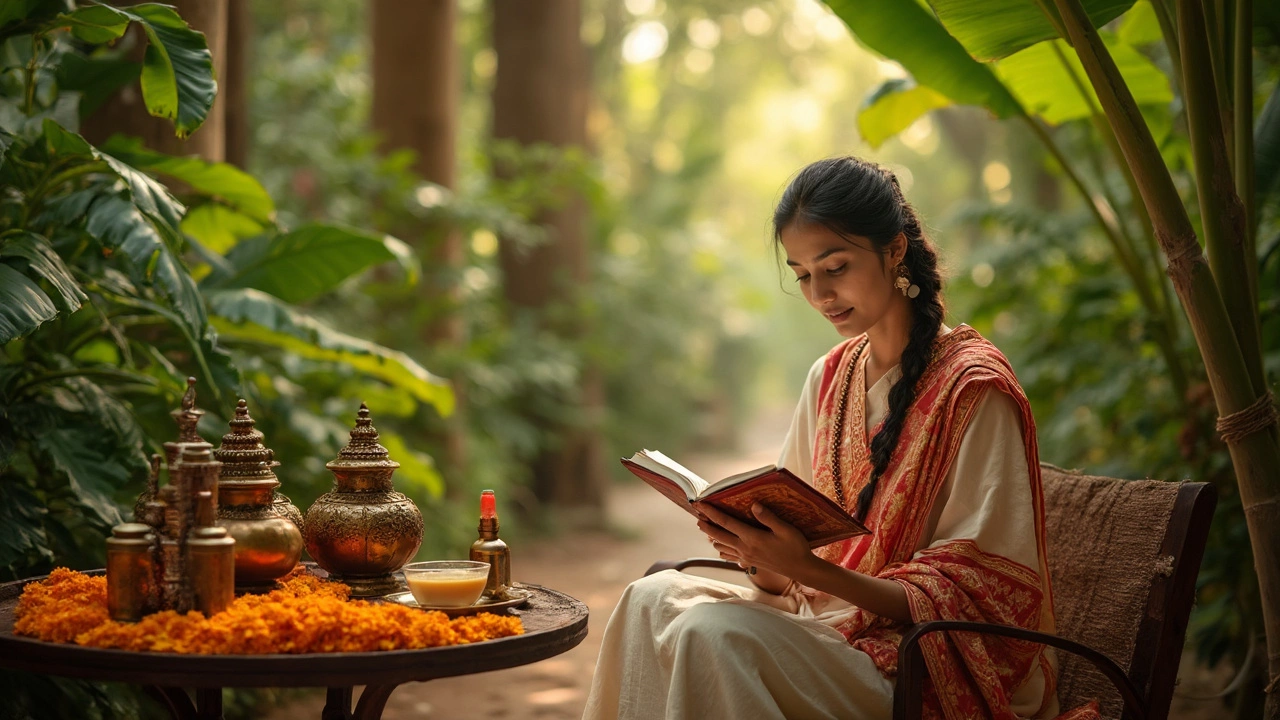Abhyanga: The Ancient Ayurvedic Massage for Pain Relief and Balance
When you think of Abhyanga, a traditional Ayurvedic full-body oil massage using warm herbal oils. Also known as Ayurvedic oil massage, it’s one of the oldest healing practices in India, used for over 5,000 years to calm the nervous system, loosen stiff joints, and flush out toxins. Unlike regular massages that focus only on muscles, Abhyanga works at the level of the doshas—especially Vata—to bring deep internal balance. It’s not just about relaxation; it’s a daily ritual that supports circulation, sleep, and even mental clarity.
Abhyanga is closely tied to Ayurvedic eating times, the practice of aligning meals with your body’s natural rhythm. Both are part of dinacharya, the daily routine recommended in Ayurveda for long-term health. If you’re someone who struggles with stiff shoulders, poor sleep, or anxiety, Abhyanga can be as helpful as stretching or meditation—but it works from the outside in. The warm oil seeps into the skin, calming the nerves and reducing inflammation without drugs. Many people in India use it after physical therapy to speed up recovery from knee pain or back strain.
It’s not just for healthy people. People recovering from surgery, those with arthritis, or even those feeling burnt out from stress find relief through Abhyanga. The oils used—like sesame, coconut, or mustard—are chosen based on your body type, especially if you have a dominant Vata dosha, one of the three body-energy types in Ayurveda linked to movement, dryness, and anxiety. When Vata is out of balance, you feel cold, restless, or achy. Abhyanga directly counters that with warmth and grounding.
What makes Abhyanga different from a spa massage? It’s intentional. The strokes follow energy channels called nadis. The oil isn’t just for glide—it’s medicated with herbs like ashwagandha or turmeric to boost healing. And it’s done slowly, with rhythm, not speed. You don’t need a professional to start—you can do it yourself at home, 15 minutes a day, before a shower.
There’s no magic pill for chronic pain, but Abhyanga offers something just as powerful: consistency. It doesn’t promise instant results, but over weeks, people report better sleep, less stiffness, and a calmer mind. It’s not just a treatment—it’s a daily act of self-care that fits right into an Ayurvedic lifestyle. If you’ve tried physical therapy and still feel tight, or if you’re looking for a natural way to manage pain without drugs, Abhyanga might be the missing piece.
-
4
Ayurvedic massage is a unique bodywork practice from India that combines herbal oils with massage techniques designed to suit your body type. It’s rooted in ancient Ayurveda, which aims to balance your mind and body. This article breaks down what makes Ayurvedic massage so special, including the techniques, benefits, and what to expect during a session. You’ll find useful tips for choosing the right massage for your needs. Whether you’re a skeptic or a wellness fan, there’s plenty to learn about this centuries-old healing tradition.
